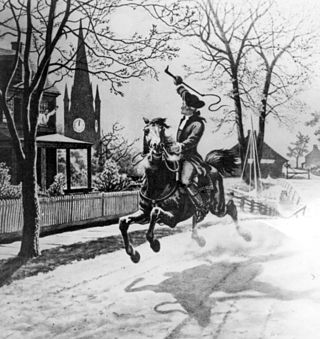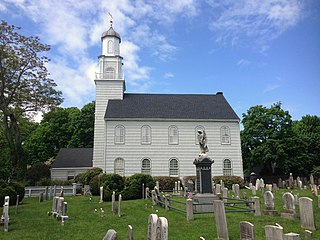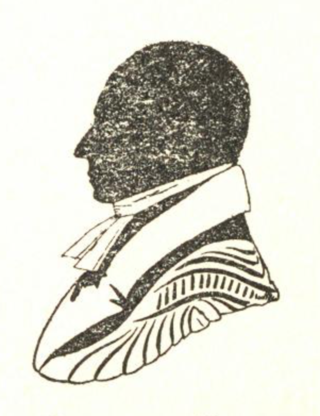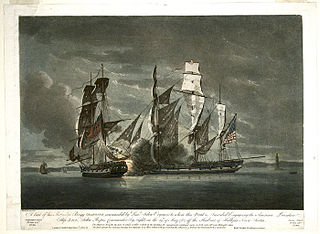
The American Revolutionary War, also known as the Revolutionary War or American War of Independence, was the military conflict of the American Revolution in which American Patriot forces under George Washington's command defeated the British, establishing and securing the independence of the United States. Fighting began on April 19, 1775, at the Battles of Lexington and Concord. The war was formalized and intensified following passage of the Lee Resolution on July 2, 1776, which asserted that the Thirteen Colonies were "free and independent states", and the Declaration of Independence, drafted by the Committee of Five and written primarily by Thomas Jefferson, two days later, on July 4, 1776, by the Second Continental Congress in Philadelphia.

Jonathan Trumbull Sr. was an American politician and statesman who served as Governor of Connecticut during the American Revolution. Trumbull and Nicholas Cooke of Rhode Island were the only men to serve as governor of both a British colony and an American state, and he was the only governor to take up the Patriot cause at the start of the Revolutionary War. Trumbull College at Yale University, the town of Trumbull, Connecticut, Trumbull County, Ohio, and Jonathan the Husky are all named for him.

During the American Revolutionary War, the Continental Army and British Army conducted espionage operations against one another to collect military intelligence to inform military operations. In addition, both sides conducted political action, covert action, counterintelligence, deception, and propaganda operations as part of their overall strategies.

Benjamin Tallmadge was an American military officer, spymaster, and politician. He is best known for his service as an officer in the Continental Army during the American Revolutionary War. He acted as leader of the Culper Ring during the war, a celebrated network of spies in New York where major British forces were based. He also led a successful raid across Long Island that culminated in the Battle of Fort St. George. After the war, Tallmadge was elected to the US House of Representatives as a member of the Federalist Party.

The Culper Ring was a network of spies active during the American Revolutionary War, organized by Major Benjamin Tallmadge and General George Washington in 1778 during the British occupation of New York City. The name "Culper" was suggested by George Washington and taken from Culpeper County, Virginia. The leaders of the spy ring were Abraham Woodhull and Robert Townsend, using the aliases of "Samuel Culper Sr." and "Samuel Culper Jr.", respectively; Tallmadge was referred to as "John Bolton".
The 2nd Continental Light Dragoons, also known as Sheldon's Horse after Colonel Elisha Sheldon, was commissioned by the Continental Congress on December 12, 1776, and was first mustered at Wethersfield, Connecticut, in March 1777 for service with the Continental Army. The regiment consisted of four troops from Connecticut, one troop each largely from Massachusetts and New Jersey, and two companies of light infantry.

The Meigs Raid was a military raid by American Continental Army forces, under the command of Connecticut Colonel Return Jonathan Meigs, on a British Loyalist foraging party at Sag Harbor, New York on May 24, 1777 during the American Revolutionary War. Six Loyalists were killed and 90 captured while the Americans suffered no casualties. The raid was made in response to a successful British raid on Danbury, Connecticut in late April that was opposed by American forces in the Battle of Ridgefield.

Ann Bates was a loyalist spy during the American Revolution. Originally from Philadelphia, Pennsylvania, Bates was known for her awareness, her intelligence, and her ability to remain calm under pressure. She was commonly referred to as "Mrs. Barnes" by affiliates in her spy networks. She was known to carry an unknown unique token that would eventually identify her as a British spy. She would go on to become a part of British General Clinton's espionage network, and would help the British combat American forces on several fronts. She reportedly took part in various clandestine spy missions between 1778 and 1780. Bates was most well known for her missions completed at George Washington's base camp in White Plains, New York, and during the Rhode Island campaign or the Battle of Rhode Island.
Abraham Woodhull was a leading member of the Culper Spy Ring in New York City and Setauket, New York, during the American Revolutionary War. He used the alias "Samuel Culper", which was a play on Culpeper County, Virginia, and was suggested by George Washington.
355 was the code name of a female spy during the American Revolution, part of the Culper Ring. She was one of the first spies for the United States, but her real identity is unknown. The number 355 could be decrypted from the system the Culper Ring used to mean "lady."

The Battle of Fort St. George was the culmination of a Continental Army raiding expedition led by Benjamin Tallmadge against a fortified Loyalist outpost and storage depot at the Manor St. George on the south coast of Long Island on November 23, 1780, during the American Revolutionary War. Tallmadge's raid was successful; the garrison was surprised, and many provisions and prisoners were taken.

The Battle of Setauket was a failed attack during the American Revolutionary War on a fortified Loyalist outpost in Setauket, Long Island, New York, by a force of Continental Army troops from Connecticut under the command of Brigadier General Samuel Holden Parsons.
Caleb Brewster was a member of the Culper spy ring during the American Revolutionary War, reporting to General George Washington through Major Benjamin Tallmadge. He carried messages across Long Island Sound between Major Tallmadge and the ring's main spies on Long Island, New York, and in New York City. He also made direct reports to Washington concerning naval activities in the New York City area.
Elizabeth Burgin was an American patriot during the American Revolutionary War who helped over 200 prisoners of war escape British prison ships.
Anna Smith Strong of Setauket, New York was an American Patriot, and she may have been one of the only female members of the Culper Spy Ring during the American Revolution. Her perceived main contribution in the ring was to relay signals to a courier who ran smuggling and military missions for General George Washington. No information has been found concerning Anna's activities after the war other than that she and her husband, Selah Strong, lived quietly in Setauket for the rest of their lives. She died on August 12, 1812.
Jonas Hawkins was an American Patriot and a member of the Culper Spy Ring during the American Revolution.
Cato Howe was an enslaved African American Black Patriot spy and courier during the American Revolution. Cato's enslaver, Hercules Mulligan, gathered intelligence through his personal connections as well as clients at his New York City tailoring shop, and Cato carried the information on horseback to Continental Army officers and other revolutionaries, including Alexander Hamilton and George Washington, and often through British-held territory. Cato's messages are credited with likely saving Washington's life on two occasions. Other than his intelligence activities with Mulligan, little definite information about Cato is available, though an excavation of his home after the war provides historians with more information about his life after the war.
Hercules Mulligan was an Irish-American tailor and spy during the American Revolutionary War. He was a member of the Sons of Liberty.

The Raid on Charlottetown of 17–18 November 1775, early in the American Revolutionary War, involved two American privateers of the Marblehead Regiment attacking and pillaging Charlottetown, Prince Edward Island, then known as St. John's Island. The raid motivated Nova Scotia Governor Francis Legge to declare martial law. Despite the raid's success, George Washington immediately freed senior colonial officials the privateers had brought back as prisoners to Cambridge, Massachusetts.

The Province of Nova Scotia was heavily involved in the American Revolutionary War (1776–1783). At that time, Nova Scotia also included present-day New Brunswick until that colony was created in 1784. The Revolution had a significant impact on shaping Nova Scotia, "almost the 14th American Colony". At the beginning, there was ambivalence in Nova Scotia over whether the colony should join the Americans in the war against Britain. Largely as a result of American privateer raids on Nova Scotia villages, as the war continued, the population of Nova Scotia solidified their support for the British. Nova Scotians were also influenced to remain loyal to Britain by the presence of British military units, judicial prosecution by the Nova Scotia Governors and the efforts of Reverend Henry Alline.










